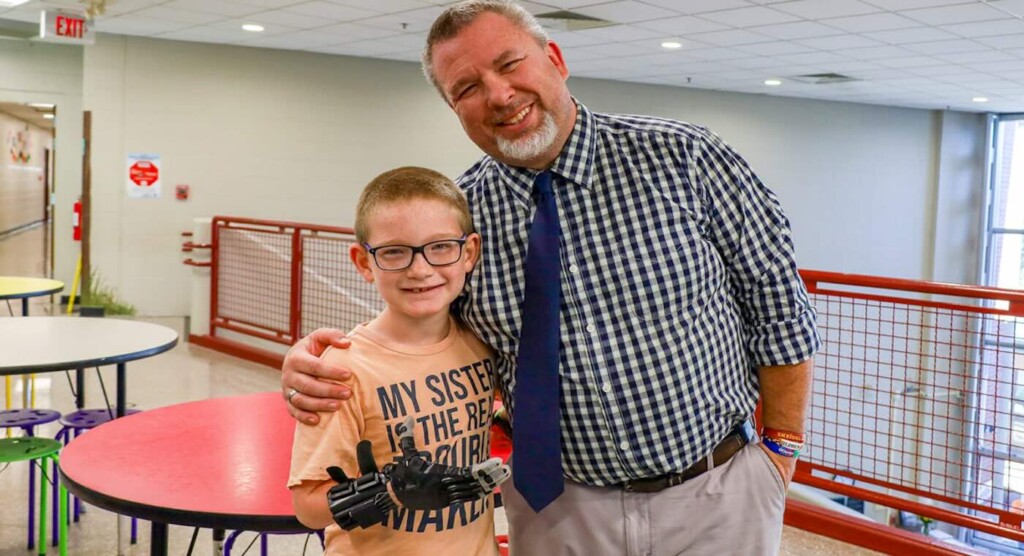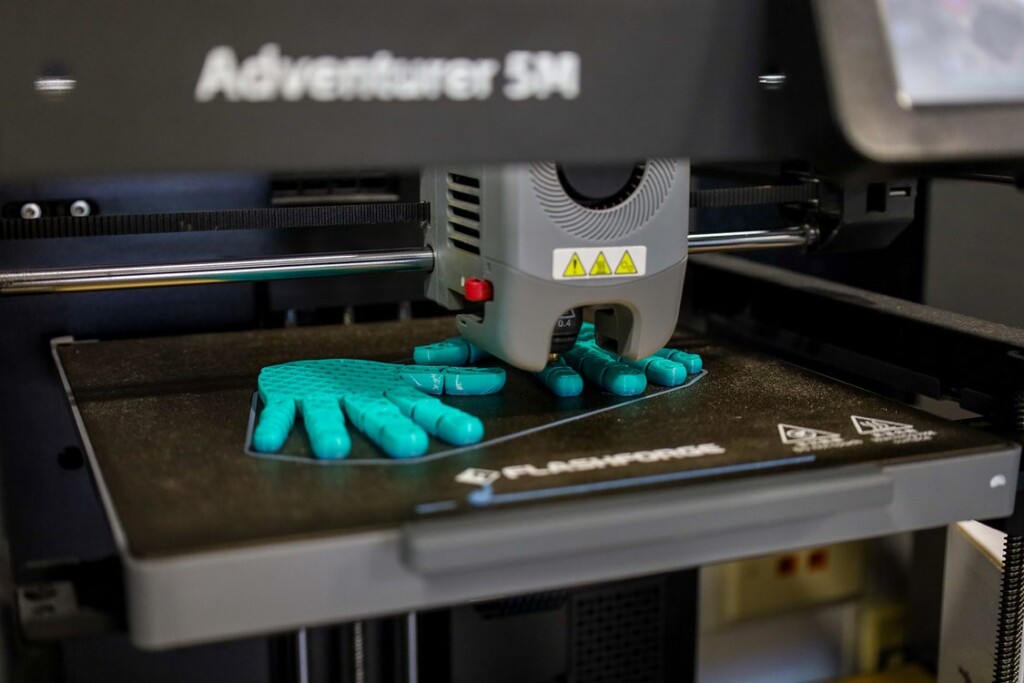
Simply using corn-based bioplastic, a couple of screws, fishing line, and small rubber bands, an elementary school teacher turned himself into a hero.
But he didn’t have to throw on a cape and mask, he only had to switch on his 3D printer.
Scott Johnson, a STEA(rt)M-focused teacher at Red Cross Elementary School in Kentucky, noticed 4 years ago that one of his kindergarten students was missing a hand, and so had come into class wearing a rubber one. It had no function of its own, but the child just wore it for aesthetic purposes.
Being a STEAM teacher, Johnson happened to have a small arsenal of 3D printers in his lab/workshop, and thought what a good school project it would be to print a functional rubber hand for his student.
The boy, Jackson Farmer, was born without a right hand. He attended Mr. Johnson’s STEAM class, just like all 800 students in all the grades at Red Cross, from K to 6, but the teacher didn’t tell Farmer what he was working on.
Throughout last year, whenever Johnson had time, he would try to develop the design for a simple, modular, lightweight prosthetic hand that could be printed. A lot of help and advice came through a networking movement called E-Nable. Full of people using 3D printers to create low-cost functional prosthetics around the world, Johnson was able to access all kinds of valuable design information that he incorporated into his ultimate model.
“I never wanted him to feel like he had something heavy on his wrist; I want him to be able to play, so it’s pretty lightweight,” Johnson said.
Johnson chose not to tell Farmer or his family about the project just in case he found out he was in over his head and couldn’t get the job done. That wasn’t to be the case, however, and he eventually printed a prototype and showed it to the Farmers, who gave him permission to proceed with the real thing.

It took 25 hours of printing, and 4 hours of assembly, but requires no wires nor batteries. It has a simple grasping function triggered by movements in Farmer’s wrist. The boy had grown up over those years of planning and was in the 4th grade by the time the hand was ready.
“It felt great. It felt like it was just right,” Jackson said, according to the Kentucky DoT in a feature piece on Johnson’s STEAM class. “(My favorite thing is) trying to write (with the hand) … I’m not that good, but I try.”
3D-PRINTING FOR GOOD:
The fingers are attached to the prosthetic wrist by fishing lines and use a fulcrum lever to move. When Jackson flexes his wrist down, the fingers close. When he relaxes his wrist, the hand opens back up.
All the materials cost between $20 and $30, and any part of the hand that tears or breaks can be 3D printed and replaced. Farmer, who does 3D printing in Johnson’s lab, will leave school with all the files needed to keep creating replacements as long as he uses the hand.
SHARE This Awesome Teacher And The Trouble He Went Through On Behalf Of A Student…


Leave a Reply